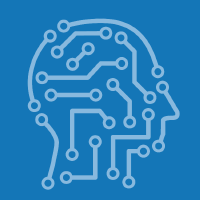Topic Menu
► Topic MenuTopic Editors

2. Assistant Professor, Nuclear Engineering and Radiation Science, Missouri University of Science and Technology, Rolla, MO 65409, USA
Intelligent, Explainable and Trustworthy AI for Advanced Nuclear and Sustainable Energy Systems
Topic Information
Dear Colleagues,
Machine learning (ML) and artificial Intelligence (AI) are increasingly used in nuclear and sustainable energy systems. The United States Nuclear Regulatory Research (NRC) and the Department of Energy (DOE) initiated a significant research effort to determine the feasibility of ML/AI-driven techniques to advance energy systems research. These tools facilitate risk-informed decision-making and streamline high-performing simulations by analyzing vast amounts of data. However, these models must be fair, unbiased, explainable, and overall intelligent in nature to gain confidence in AI's trustworthiness. In order to assure trustworthiness for decision-making, ML/AI techniques need to be audited, accounted for, and easy to understand for the energy systems. Furthermore, the concepts of explainable AI (XAI) and interpretable machine learning (IML) need to be incorporated to understand the reasoning behind the prediction of complex energy systems. This understanding can lead to better maintenance and repair planning and improved system performance for sustainable energy systems. This Special Issue aims to explore potential improvements and current research in ML and AI that are explainable and trustworthiness and incorporate AI risk management for energy systems. Potential authors are encouraged to submit novel ideas, concepts, and results by following the submission guidelines.
Dr. Dinesh Kumar
Dr. Syed Bahauddin Alam
Topic Editors
Keywords
- uncertainty quantification
- surrogate modeling
- uncertainty aware data-driven algorithms
- explainable artificial intelligence
- machine learning risk assessment
- robust optimization
Participating Journals
| Journal Name | Impact Factor | CiteScore | Launched Year | First Decision (median) | APC |
|---|---|---|---|---|---|

AI
|
- | - | 2020 | 20.8 Days | CHF 1600 |

Algorithms
|
2.3 | 3.7 | 2008 | 15 Days | CHF 1600 |

Applied Sciences
|
2.7 | 4.5 | 2011 | 16.9 Days | CHF 2400 |

Energies
|
3.2 | 5.5 | 2008 | 16.1 Days | CHF 2600 |

Journal of Nuclear Engineering
|
- | - | 2020 | 23.5 Days | CHF 1000 |

MDPI Topics is cooperating with Preprints.org and has built a direct connection between MDPI journals and Preprints.org. Authors are encouraged to enjoy the benefits by posting a preprint at Preprints.org prior to publication:
- Immediately share your ideas ahead of publication and establish your research priority;
- Protect your idea from being stolen with this time-stamped preprint article;
- Enhance the exposure and impact of your research;
- Receive feedback from your peers in advance;
- Have it indexed in Web of Science (Preprint Citation Index), Google Scholar, Crossref, SHARE, PrePubMed, Scilit and Europe PMC.


